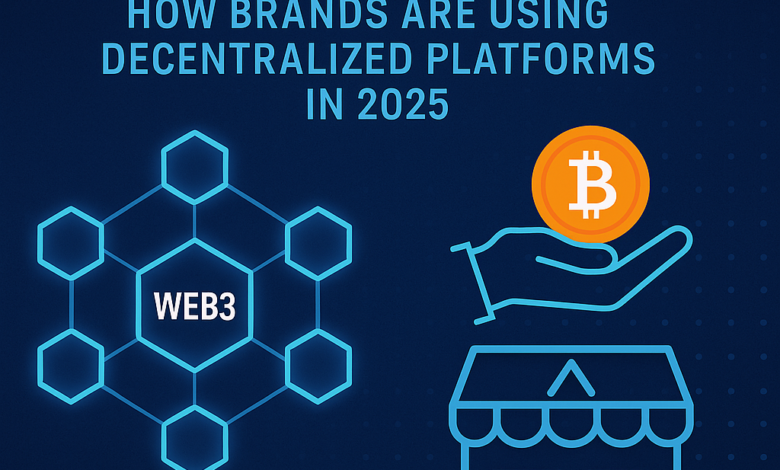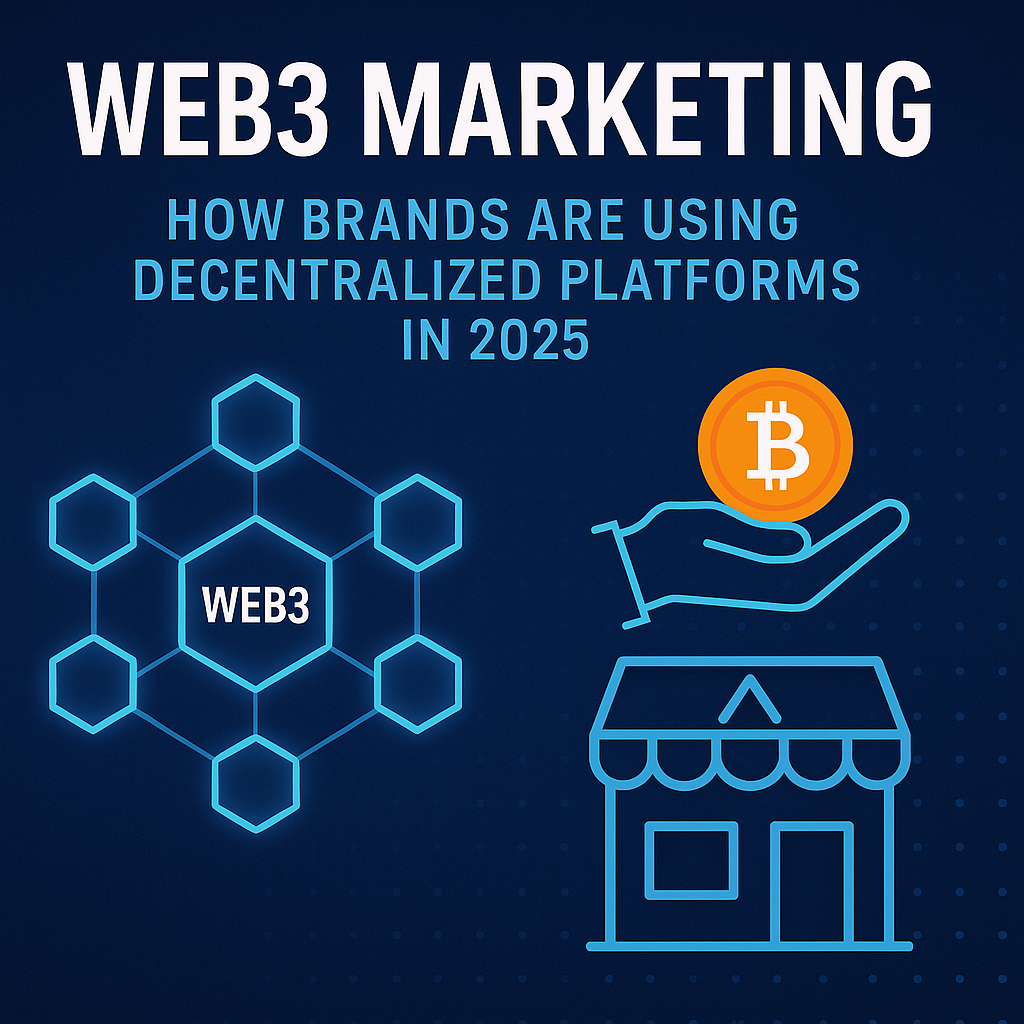Web3 Marketing Explained: How Blockchain is Changing Promotion in 2025

Web3 marketing is transforming how brands connect with users. In 2025, blockchain-powered strategies are not just buzzwords—they’re reshaping affiliate marketing, user acquisition, and loyalty systems. Let’s explore how you can leverage Web3 in your digital campaigns. By prioritizing transparency, community involvement, and data ownership, brands can foster stronger connections with their consumers in this evolving digital landscape.
From Web2 to Web3: The Evolution of Digital Engagement
In Web2, user data was collected by centralized platforms like Facebook or Google and monetized through ads. Brands relied heavily on these middlemen to reach consumers. In contrast, Web3 marketing empowers brands to engage directly with their audience, utilizing decentralized technologies that prioritize user privacy and ownership. This shift not only enhances transparency but also fosters greater trust between consumers and brands, creating a more personalized and meaningful connection. As brands embrace this new paradigm, they can cultivate communities around shared values and interests, allowing for more authentic interactions. Furthermore, the integration of blockchain technology ensures that consumers have control over their data, leading to an ecosystem where loyalty and engagement can thrive without the constraints of traditional advertising models.
In Web3 marketing, this dynamic has flipped. It leverages blockchain, tokenomics, and decentralized platforms to allow direct engagement between brands and communities, where users control their data and get rewarded for their attention.
Key Characteristics of Web3 Marketing
- include a focus on community building, incentivization through tokens, and an emphasis on authenticity. Brands are now tasked with creating genuine interactions that resonate with their audience, moving away from traditional, one-sided advertising approaches to more collaborative and participatory strategies.
- Decentralization: No gatekeepers — users and brands interact peer-to-peer. This shift not only empowers consumers but also fosters a sense of belonging and loyalty within the community. As brands adapt to this new landscape, they must prioritize transparency and trust, ensuring that their message aligns with the values and expectations of their audience.
- Tokenization: Campaigns use digital assets (NFTs, crypto tokens) to incentivize actions. This innovative approach allows brands to create unique experiences that engage consumers on a deeper level, encouraging participation and investment in the brand’s story. By leveraging tokenization, companies can reward their most loyal customers, turning them into active advocates who contribute to the brand’s growth and success.
- Transparency: Transactions are recorded on-chain, ensuring trust and accountability. This transparency fosters a sense of security for consumers, as they can verify the authenticity and ownership of digital assets. As brands increasingly adopt these strategies, they not only enhance customer loyalty but also build a community centered around shared values and interests.
- Community-Led: Engagement is often driven by DAOs (Decentralized Autonomous Organizations). These organizations empower consumers to have a direct say in decision-making processes, creating a more inclusive environment. By involving customers in governance, brands can cultivate deeper connections and ensure that their offerings align with the needs and desires of their community.
Why Brands Are Shifting to Web3 Marketing in 2025
The shift to Web3 isn’t just about trend-hopping—it’s strategic. Brands now recognize that Web3 enables deeper connections, increased loyalty, and co-ownership. These elements foster a sense of belonging among consumers, allowing them to become active participants rather than passive recipients of marketing messages. As brands embrace this new paradigm, they are not only enhancing their customer relationships but also paving the way for innovative business models that prioritize community engagement and shared value. This evolution in the marketing landscape encourages brands to collaborate with their audiences, creating a dynamic environment where feedback and co-creation thrive. Ultimately, this approach not only revolutionizes brand loyalty but also empowers consumers to shape the products and services they use in meaningful ways.
Ownership, Privacy, and Trust
Users now demand more control over their data and online identity. Web3 enables self-sovereign identity (SSI), allowing users to opt into campaigns with full consent. This boosts trust and reduces ad fatigue.
Community-Driven Campaigns
Brands in 2025 aren’t “targeting” audiences —they’re co-creating with communities. Whether it’s governance votes for product design or token-based loyalty, users are active participants, not just consumers.
Decentralized Platforms Leading Web3 Marketing
With traditional platforms losing appeal, brands are now launching campaigns on Web3-native social and commerce platforms. These platforms prioritize user engagement and ownership, fostering a more authentic connection between brands and their audiences. As a result, marketing strategies in this landscape are increasingly centered around collaboration, transparency, and shared values, setting the stage for a more sustainable and inclusive approach to brand building. This shift not only empowers users to take part in the creative process but also encourages brands to listen and adapt to community feedback. By leveraging decentralized platforms, companies can cultivate deeper relationships with their customers, ultimately driving loyalty and long-term success.

SocialFi Networks, DAOs, and Blockchain Communities
Web3 communities are now hosted on platforms like Lens Protocol, Farcaster, Mastodon, and Mirror.xyz. These platforms enable creators and users to interact in decentralized environments, where content ownership and monetization are directly controlled by the individuals involved. This shift not only empowers users but also encourages brands to adopt innovative strategies that resonate with the values of their communities, ultimately leading to more meaningful and lasting relationships. These communities act like mini economies, with their own rules, tokens, and value systems.
Comparison of Popular Web3 Marketing Platforms
| Platform | Type | Marketing Tools Available | Notable Brands (2025) |
|---|---|---|---|
| Lens Protocol | SocialFi | Token rewards, NFT drops, Airdrops | Adidas, Audi |
| Mirror.xyz | Publishing | Token-gated content, DAO support | TIME Magazine, OpenSea |
| Zora | NFT Protocol | Dynamic minting, storytelling | Nike, Pepsi |
| SuperRare | NFT Gallery | Drops, auctions, affiliate links | Gucci, Samsung |
How Brands Are Leveraging NFTs and Tokens
NFTs are no longer just digital art — in 2025, they’re gateways to experiences, loyalty tools, and rewards programs.
NFT Loyalty Programs & Gamification
Starbucks pioneered NFT-based loyalty programs in 2023, and now hundreds of brands have followed. In Web3 marketing, NFTs give users real ownership of loyalty points, turning engagement into a collectible experience.
NFT Campaign Examples in 2025
| Brand | NFT Utility | Platform Used | Campaign Highlight |
|---|---|---|---|
| Adidas | NFT unlocks early product drop | Lens Protocol | Sold out in 2 hours |
| Spotify | NFT-based concert tickets | Polygon | Verified resale with royalty for artists |
| Red Bull | Collectible energy pack NFTs | Zora | Integrated in AR game campaign |

Web3 Influencer Marketing: The Creator Economy Reimagined
Influencers are no longer at the mercy of algorithms. In 2025, creators are launching their own tokens, building token-gated communities, and creating smart contract-based sponsorships.
Peer-to-Peer Sponsorships & Tokenized Collabs
Instead of middlemen agencies, influencers use on-chain tools to negotiate and verify sponsorships. These smart contracts release payment only when agreed milestones are met, creating trust between brands and creators.
Brands like Fenty Beauty and Tesla have run tokenized campaigns with creators in emerging markets — paying in stablecoins or offering equity via tokens.
Challenges and Limitations in Web3 Marketing
Despite its promise, Web3 marketing in 2025 is not without its hurdles.
Technical Barriers, Regulations & Adoption Rates
Many consumers still struggle with wallets, seed phrases, or gas fees. Also, regulation of token-based promotions varies by country.
Challenges vs Solutions for Web3 Marketing in 2025
| Challenge | Solution in 2025 |
|---|---|
| Wallet onboarding complexity | Social login wallets like Web3Auth |
| Ad fraud & fake impressions | On-chain analytics (e.g., Dune, Nansen) |
| Regulatory uncertainty | Compliance APIs and token audits |
| Low awareness in older users | Hybrid campaigns (Web2 + Web3 bridges) |

Web3 Marketing Examples: Real-World Case Studies
This section showcases real-world examples of successful Web3 marketing campaigns, illustrating how businesses are leveraging innovative strategies to connect with their audiences and achieve their marketing goals in the decentralized web.
4.1. Pudgy Penguins: Building Brand Loyalty with NFT Collectables
Pudgy Penguins is a collection of 8,888 unique NFT avatars launched in 2021 on the Ethereum blockchain. Despite an early setback due to the controversy surrounding its original leadership, the project was revitalized in 2022 when Luca Schnetzler acquired it. Under new management, Pudgy Penguins evolved into one of the most successful NFT projects by expanding beyond digital ownership into mainstream consumer markets.

A key element of Pudgy Penguins’ Web3 marketing success is its strategic fusion of digital assets with real-world products. The brand introduced Pudgy Toys, a line of plush penguin collectibles, available at major retailers like Walmart and Target. This innovative approach bridges NFT ownership with physical merchandise, creating new touchpoints for brand engagement. Holders of Pudgy Penguins NFTs benefit from a unique royalty-sharing model, receiving 5% of the net revenue from toy sales linked to their digital assets.
The project’s marketing is also driven by an aggressive content strategy across multiple social media platforms, including (formerly Twitter), Instagram, TikTok, and Giphy. By producing viral memes, GIFs, and interactive content, Pudgy Penguins has generated over 2 billion GIF views and amassed a substantial following. This strong brand presence fosters community engagement and enhances organic traffic to the project’s website.
Pudgy Penguins’ ability to transition from an NFT collection into a mainstream consumer brand exemplifies the power of Web3 marketing. By combining digital ownership, community-driven incentives, and retail expansion, the project has successfully built a sustainable and highly recognizable brand in both Web3 and traditional markets.
Conclusion: The Future of Web3 Marketing in 2025 and Beyond
In 2025, Web3 marketing isn’t just another marketing channel — it’s a paradigm shift. This shift will require marketers to embrace new technologies and adapt their strategies to leverage the unique features of decentralized platforms. By prioritizing transparency, user engagement, and innovative solutions, businesses can effectively navigate the evolving landscape and establish meaningful connections with their audiences. As decentralization becomes mainstream, brands that adopt it early stand to benefit from more trust, higher engagement, and true brand loyalty. These advantages will not only enhance customer relationships but also drive sustainable growth in a competitive marketplace. Ultimately, the success of Web3 marketing hinges on a brand’s ability to authentically connect with its community while staying ahead of emerging trends.
Whether you’re a startup, NFT project, or global enterprise, tapping into Web3 marketing in 2025 could be your edge in a saturated digital world.
The future of marketing is co-owned, transparent, and decentralized — and it’s already here.
Frequently Asked Questions (FAQs)
What is Web3 marketing?
Web3 marketing refers to digital advertising strategies that utilize decentralized platforms, blockchain technology, and user-owned data systems for direct and trustless engagement with communities. This approach not only enhances consumer trust but also empowers users by giving them more control over their personal information and engagement. As brands embrace these principles, they will likely find innovative ways to build relationships with their audiences, ultimately leading to stronger community ties and increased brand advocacy.
How is Web3 marketing different from traditional marketing?
Unlike traditional (Web2) marketing, Web3 marketing gives users control over their data, often rewards engagement with tokens/NFTs, and eliminates intermediaries. This shift allows brands to build more authentic relationships with their audience, fostering a sense of community and loyalty. Additionally, it empowers consumers to actively participate in the marketing process, transforming them from passive recipients into engaged contributors.
Are brands really using NFTs in their marketing?
Yes. In 2025, major brands like Adidas, Nike, and Spotify use NFTs for loyalty programs, event tickets, and product launches. These initiatives not only enhance customer engagement but also create unique experiences that resonate with tech-savvy consumers. As brands continue to innovate in the Web3 space, the integration of NFTs and blockchain will likely redefine marketing strategies and foster deeper connections with audiences.
Do I need crypto to participate in Web3 campaigns?
Not always. Some platforms support credit card payments, and many use gasless transactions or social logins for non-crypto users. This accessibility allows a broader audience to engage with Web3 initiatives, fostering a more inclusive environment. As the technology continues to evolve, we can expect even more innovative ways for brands to leverage these digital assets to enhance customer experiences.
Is Web3 marketing legal?
Yes, but it depends on your region. In many areas, regulations are still evolving, so it’s essential for brands to stay informed about local laws regarding digital assets and consumer protection. Additionally, adhering to best practices in transparency and user consent is crucial for maintaining trust in Web3 marketing initiatives. Token-based promotions must follow advertising and financial regulations in each country.






One Comment